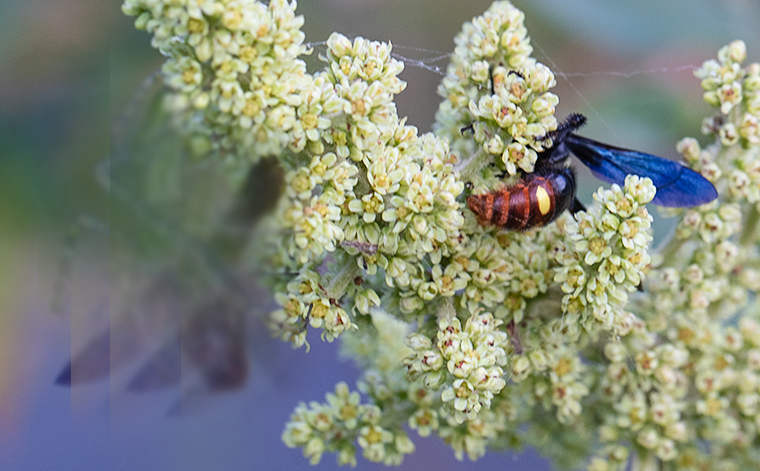

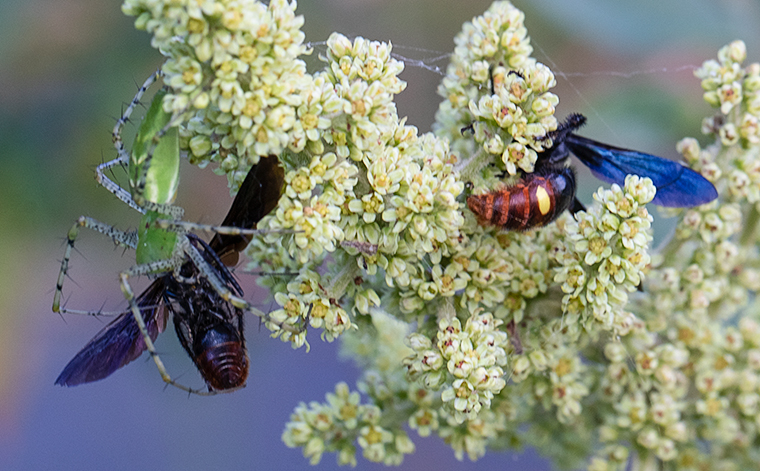
When I clear up the blur, the danger is revealed to be a spider, which has already captured one wasp.
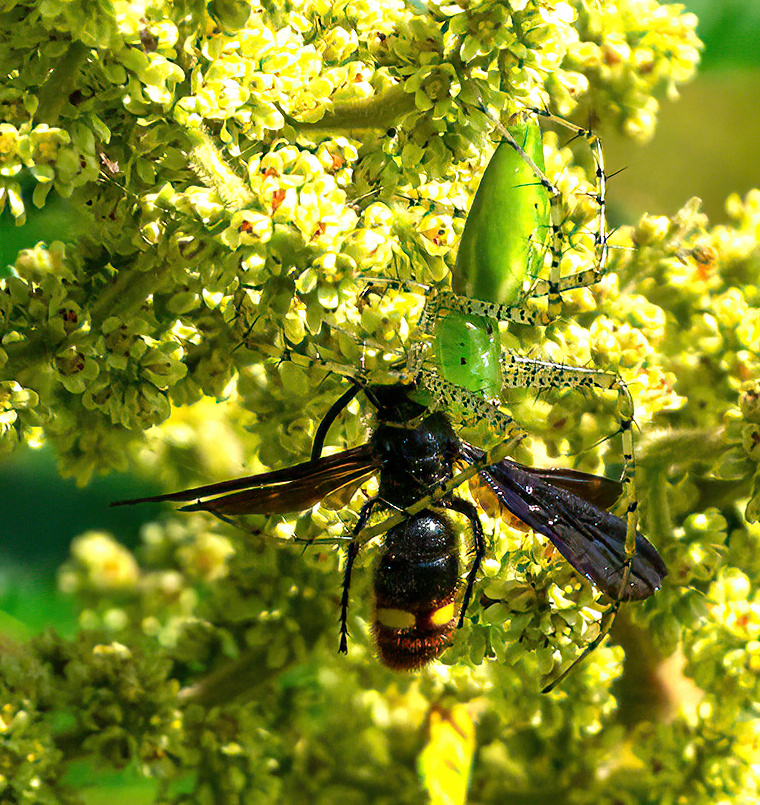
The wasp captured by this spider is a Two-spotted Blue-winged Scoliid Wasp (Scolia dubia dubia).
The same species as the wasp shown foraging for nectar in the first two photographs above.
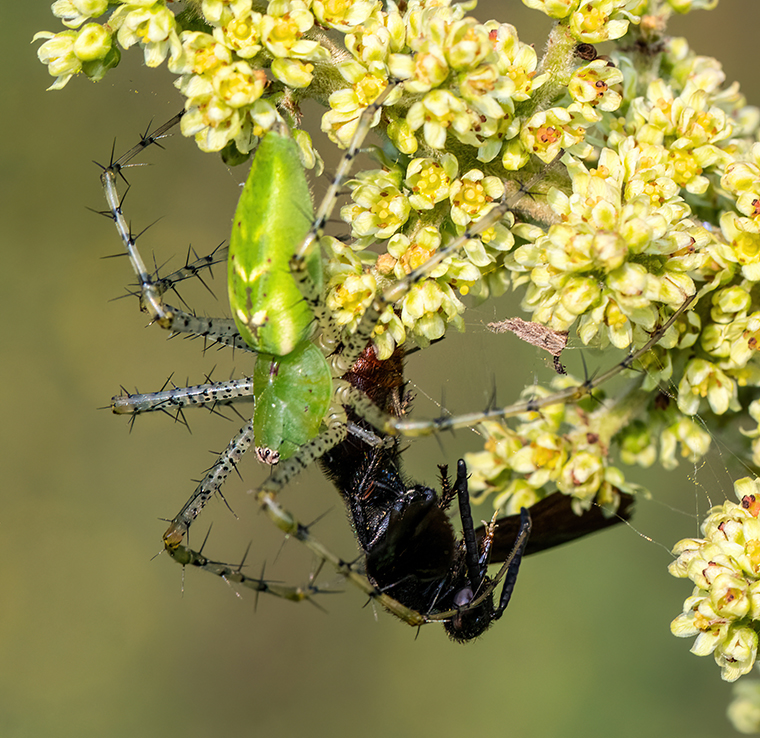
It is a Green Lynx Spider (Peucetia viridans). Lynx spiders do not use webs to capture their prey. They ambush their victims, or use their ability to run fast over vegetation to run victims down. The cat-like ability to run, jump, and pounce on victims gives them their common name of “Lynx Spider”.
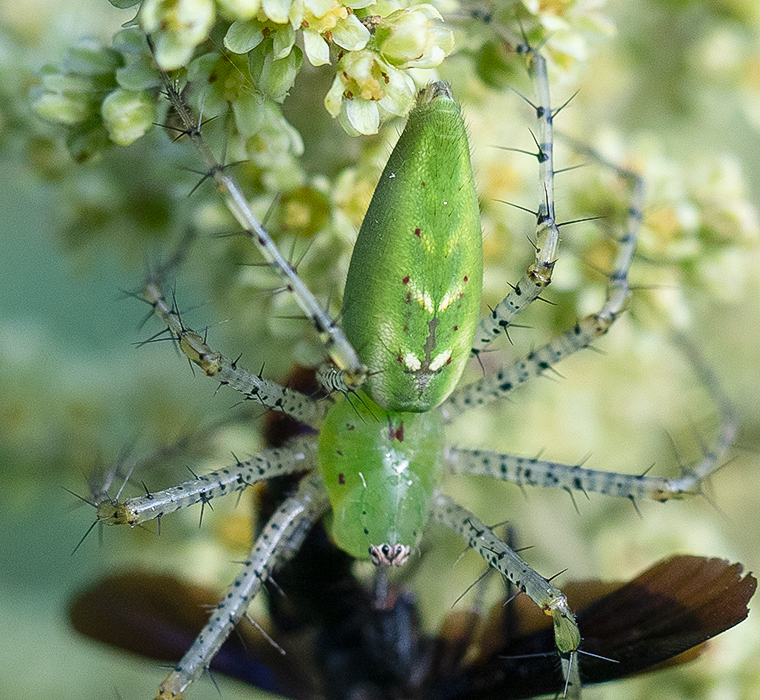
Lynx spiders are further characterized by their distinctive color, very spiny legs, and an unusual arrangement of their eyes.
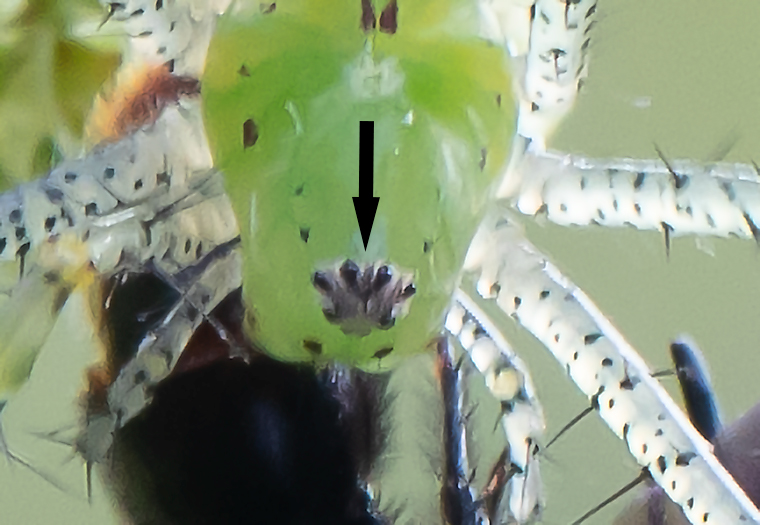
Like many spiders, Lynx Spiders have 8 eyes. The eyes are located in an unusual hexagonal configuration (arrow) clumped near the front of the cephalothorax.
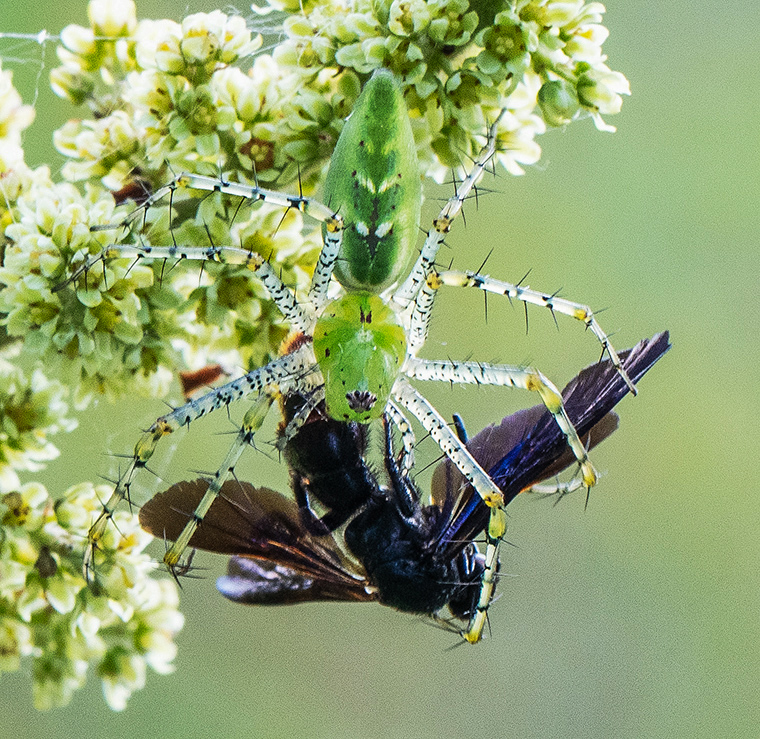
Lynx Spiders have one other ability unusual in spiders. Females can spit venom with a range of about 8 inches. There is a family of spiders (Sytodidae) that are well-known for being able to spit venom (or a mixture of silk and venom) to ensnare prey. Lynx Spiders are the only group known to spit venom that is not a member of the Spitting Spider family, and they spit venom only for defense, not to secure prey.
Apparently the best chance to get a Lynx Spider to spit venom is to find a female defending an egg case. Thus far, I have not been lucky enough to find an egg case with attendant female. Maybe someday….
Discover more from A Naturalist's Journal
Subscribe to get the latest posts to your email.

Gary,
What a beautiful spider the Lynx is. I wish we had a few Arachnids that like it in the UK. All our’s are variations on a brown theme, and those that enter ou houses at this time of the year are quite scary!
I hope that and Joyce are keeping well.
Since Covid, I have given up my monthly Nature Notes
Great to hear from you. look for a longer email soon.